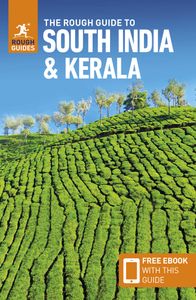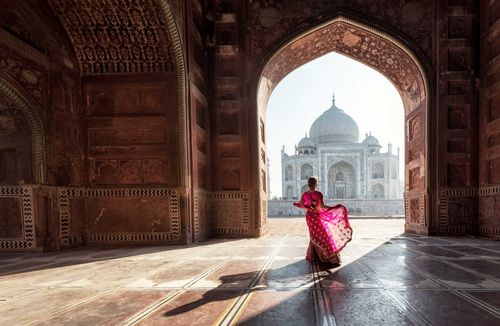Best things to do in Kochi
From the old quarter at Fort Cochin to the old district of red-tiled riverfront wharves at Mattancherry, here are the best things to do in Kochi.
#1 Explore the evocative, European-era Fort Cochin
Fort Cochin, the grid of old streets at the northwest tip of the peninsula, is where the Portuguese erected their first walled citadel, Fort Immanuel, which the Dutch East India Company later consolidated with a circle of well-fortified ramparts.
Only a few fragments of the former battlements remain (the outline of the old walls is traced by the district’s giant rain trees, some of which are more than two centuries old), but dozens of other evocative European-era monuments survive.
A good way to get to grips with Fort Cochin’s many-layered history is to pick up the free walking-tour maps produced by Kerala Tourism. They lead you around some of the district’s more significant landmarks, including the early eighteenth-century Dutch Cemetery, Vasco da Gama’s supposed house and several traders’ residences.
#2 See the famous Chinese fishing nets
Probably the single most familiar photographic image of Kerala, the huge, elegant Chinese fishing nets lining the northern shore of Fort Cochin add grace to the waterfront view.
Traders from the court of Kublai Khan are said to have introduced them to the Malabar region. Known in Malayalam as cheena vala, they can also be seen throughout the backwaters further south.
The nets, which are suspended from poles and operated by levers and weights, require at least four men to control them. If you linger, the fishermen will beckon you over to help (for a small tip).
Rough Guides Tip: make sure to read all about the best beaches in Kerala
#3 Visit the Church of St Francis, the first church built by Europeans in India
South of the Chinese fishing nets on Church Road (the continuation of River Road) is the large, typically English Parade Ground. Overlooking it, the Church of St Francis was the first built by Europeans in India.
Its exact age is not known, though the stone structure is thought to date back to the early sixteenth century. The facade, meanwhile, became the model for most Christian churches in India.
Vasco da Gama was buried here in 1524, but his body was later removed to Portugal. Under the Dutch, the church was renovated and became Protestant in 1663, then Anglican with the advent of the British in 1795.
Inside, the earliest of various tombstone inscriptions placed on the walls dates from 1562.
#4 Go antique shopping in Mattancherry
Mattancherry, the old district of red-tiled riverfront wharves and houses occupying the northeastern tip of the headland, was once the colonial capital’s main market area – the epicentre of the Malabar’s spice trade, and home to its wealthiest Jewish and Jain merchants.
Like Fort Cochin, its once grand buildings have lapsed into advanced states of disrepair, with most of their original owners working overseas.
When Mattancherry’s Jews emigrated en masse to Israel in the 1940s, their furniture and other un-portable heirlooms ended up in the antique shops for which the area is now renowned – though these days genuine pieces are few and far between.
#5 See inside the captivating Mattancherry Palace
The sight at the top of most itineraries is Mattancherry Palace, on the roadside a short walk from the Mattancherry Jetty, 1km or so southeast of Fort Cochin.
Known locally as the Dutch Palace, the two-storey building was actually erected by the Portuguese, as a gift to the raja of Cochin, Vira Keralavarma (1537–61) – though the Dutch did add to the complex.
While its squat exterior is not particularly striking, the interior is captivating, with some of the finest examples of Kerala’s underrated school of mural painting, along with Dutch maps of old Cochin, coronation robes belonging to past maharajas, royal palanquins, weapons and furniture.
#6 Go inside the Paradesi Synagogue
The neighbourhood immediately behind and to the south of Mattancherry Palace is known as Jew Town, home of a vestigial Jewish community whose place of worship is the Paradesi (White Jew) Synagogue.
Founded in 1568 and rebuilt in 1664, the building is best known for its interior, an incongruous hotchpotch paved with hand-painted eighteenth-century blue-and-white tiles from Canton.
An elaborately carved Ark houses four scrolls of the Torah, on which sit gold crowns presented by the maharajas of Travancore and Cochin, testifying to good relations with the Jewish community.
The synagogue’s oldest artefact is a fourth-century copperplate inscription from the raja of Cochin.
#7 Catch a Kathakali show in Kochi
Kochi is the only city in Kerala where you are guaranteed the chance to see live kathakali, the state’s unique form of ritualised theatre.
Whether in its authentic setting, in temple festivals held in winter, or at the shorter tourist-oriented shows that take place year round, these mesmerising dance dramas – depicting the struggles of gods and demons – are an unmissable feature of Kochi’s cultural life.
Among the most magical experiences a visitor to Kerala can have is to witness one of the innumerable ancient drama rituals that play such an important role in the cultural life of the region.
Kathakali is the best known; other less publicised forms, which clearly influenced its development, include the classical Sanskrit kudiyattam. Many Keralan forms share broad characteristics.
A prime aim of each performer is to transform the mundane into the world of gods and demons; his preparation is highly ritualised, involving otherworldly costume and mask-like make-up.


_listing_1448379939234.jpeg)

























